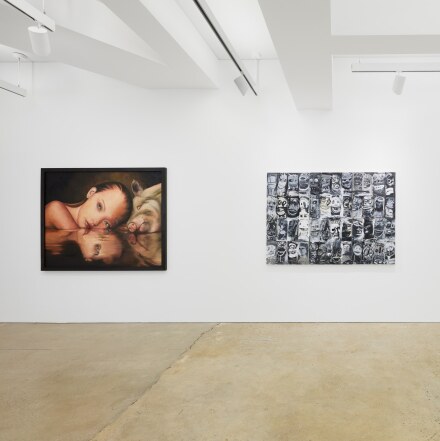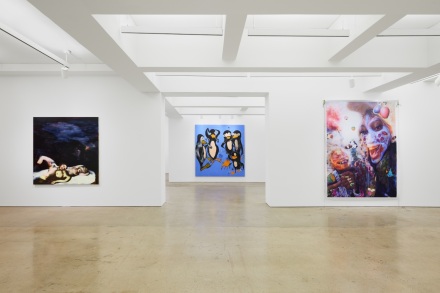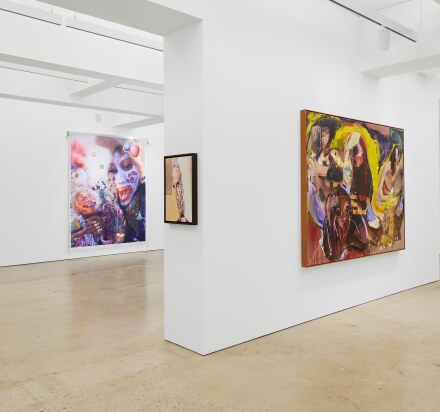
Ugly Paintings (Installation View), via Nahmad Contemporary
This month, writer Dean Kissick and curator Eleanor Cayre have teamed up at Nahmad Contemporary to present a new exhibition titled Ugly Painting. Drawing on works that mine the deliberate use of grotesque, garish, or abject in brushwork, representation, composition, or coloring, the show presents a range of works that run through a range of confrontational and conceptual approaches to the human form, its representation, and its understanding.

Ugly Paintings (Installation View), via Nahmad Contemporary
The show makes the most of “painting that is bold, confrontational, and confident, rather than pretty, decorative, polite, conservative, or overly realist,” using these modes as a way to underscore and subvert understandings of the work. “Ugliness can be powerful, moving, and even sublime. Many great historical works were considered unpleasant in their time because they broke with convention or simply because they were extremely grotesque.” Artists like Rita Ackermann present swirling, shifting strokes in concert with challenging, direct approaches that create intricate tonal confrontations and otherworldly experiences of color and form. Elsewhere, Daniel Richter’s works twist the human form through a series of grotesque twists and turns, animated, expressive movements that take the form and drag it through a series of distended movements. The body is familiar, yet strung through a series of iterations and improvisations that turn it into something else.

Ugly Paintings (Installation View), via Nahmad Contemporary
But beyond that, the work takes on a series of more expressive and intriguing approaches to painting itself, a body pushed beyond its painterly limits and into new concepts and modes. Much in the same way that one might describe “noise” as that beyond the limits of comprehensions. “It is not the idealized body of digital representation,” they write, “nor the realist body of much recent painting, but the wretched, experimental, exploded body: the body in a state of transformation, the body that may be repulsive to itself or others. Our conception of selfhood has changed dramatically over the past decade, and this is a perfect time to find different ways of conceptualizing and representing the human (and inhuman) figure.”
Exploring the human form and the painting as a place to push the envelope beyond that of the familiar, the show makes a case for new ideas in the realm of the ugly.
– D. Creahan
Read more:
Ugly Painting [Exhibition Site]



